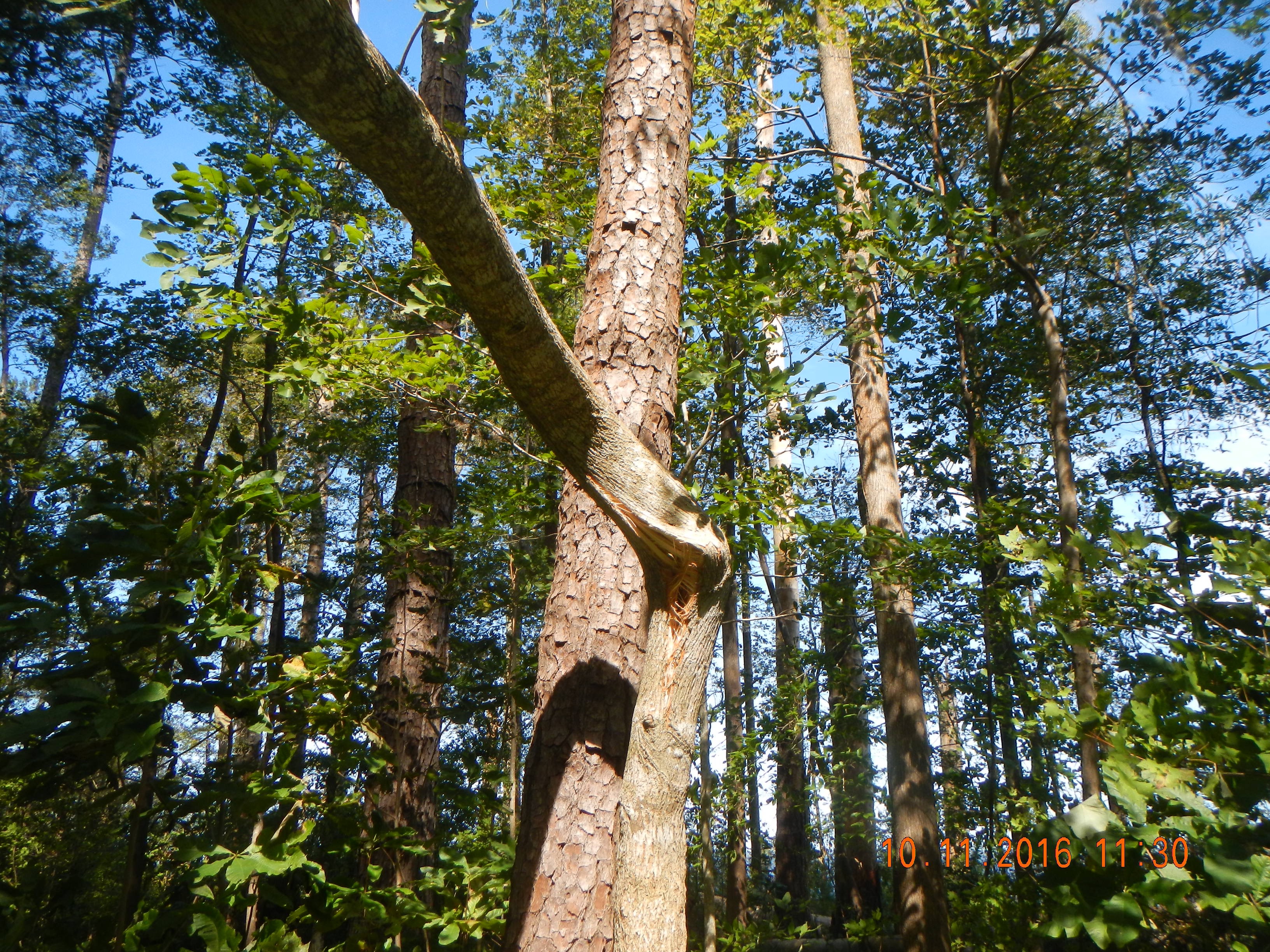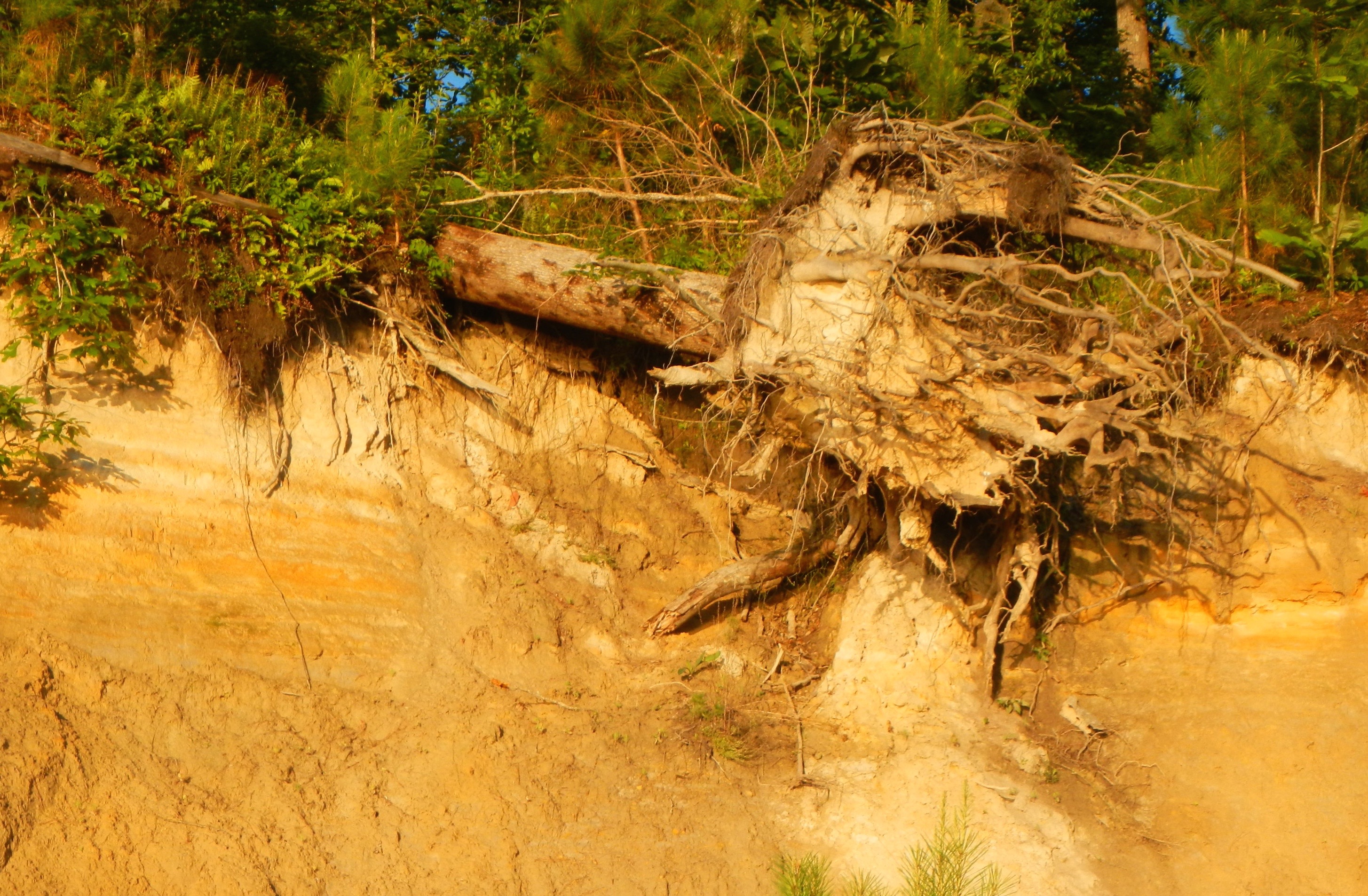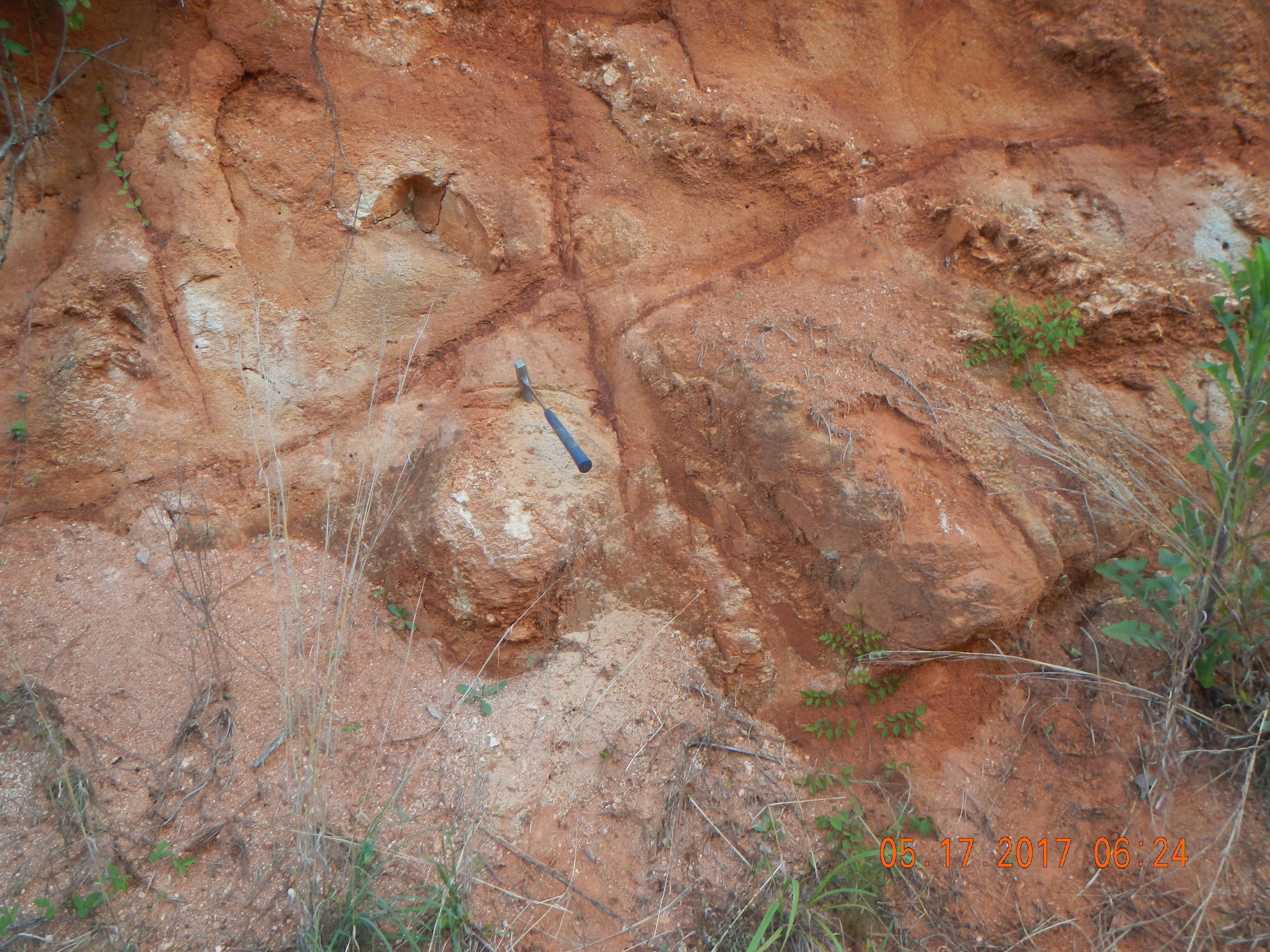HOW I STOPPED WORRYING AND LEARNED TO LOVE CONTINGENCY II: NONLINEAR DYNAMICS & CHAOS
My first, and abiding, interest in complex nonlinear dynamics arose in an effort to explain the extensive spatial variability in geomorphic and pedologic phenomena often found within short distances and small areas, in the absence of measurable variations in explanatory factors. Dynamical instability and chaos, whereby minor variations in initial conditions or effects of small, local disturbances become exaggerated over time, can explain this phenomenon. We have had considerable success over the past 25 or 30 years in this regard.

Soil profiles exposed on the Neuse River estuary shoreline, Croatan, N.C. Complex local spatial variability--despite uniform parent material--is evident. Dynamical instability and chaos in pedogenesis of the these soils was demonstrated nearly 25 years ago.





